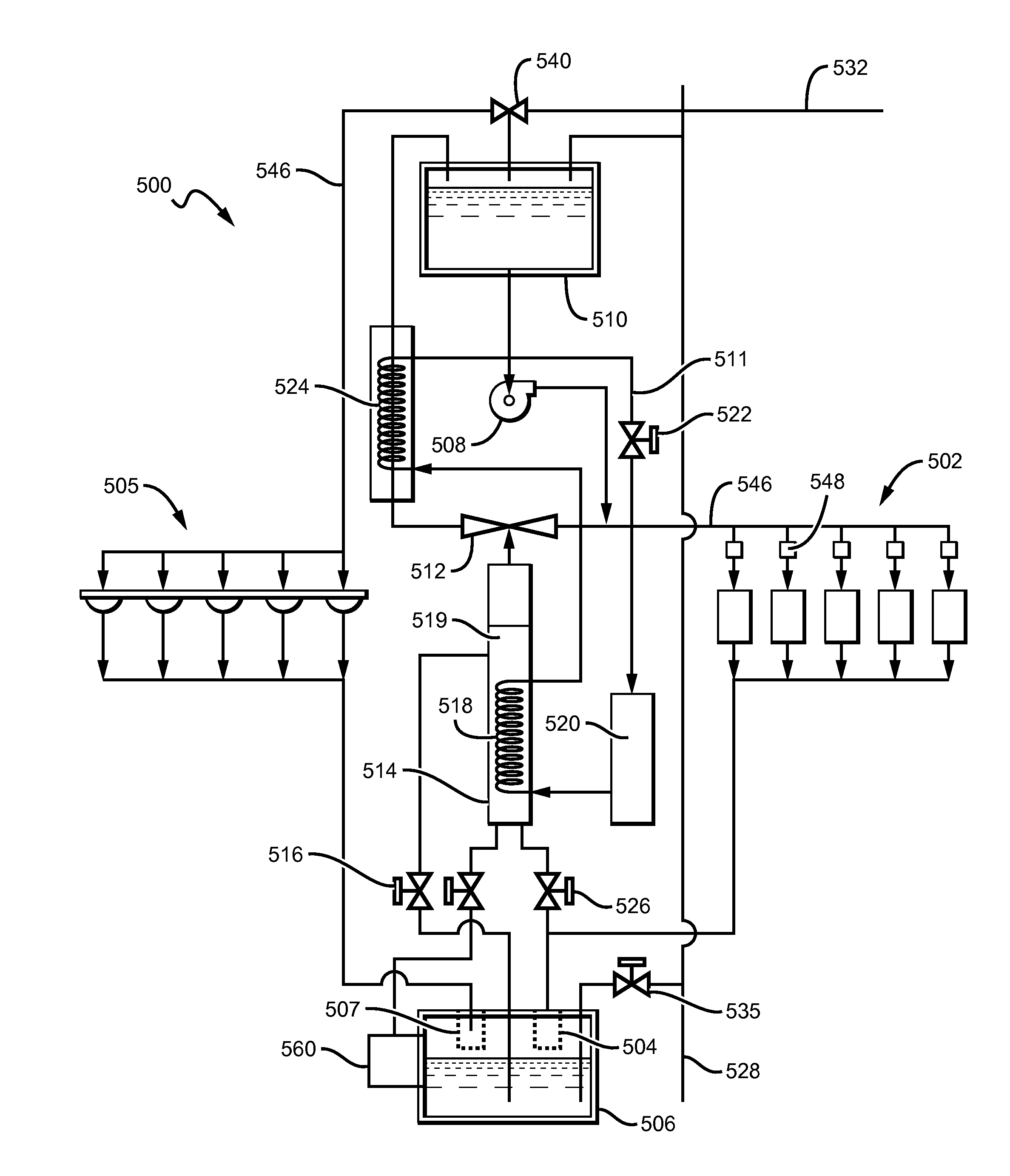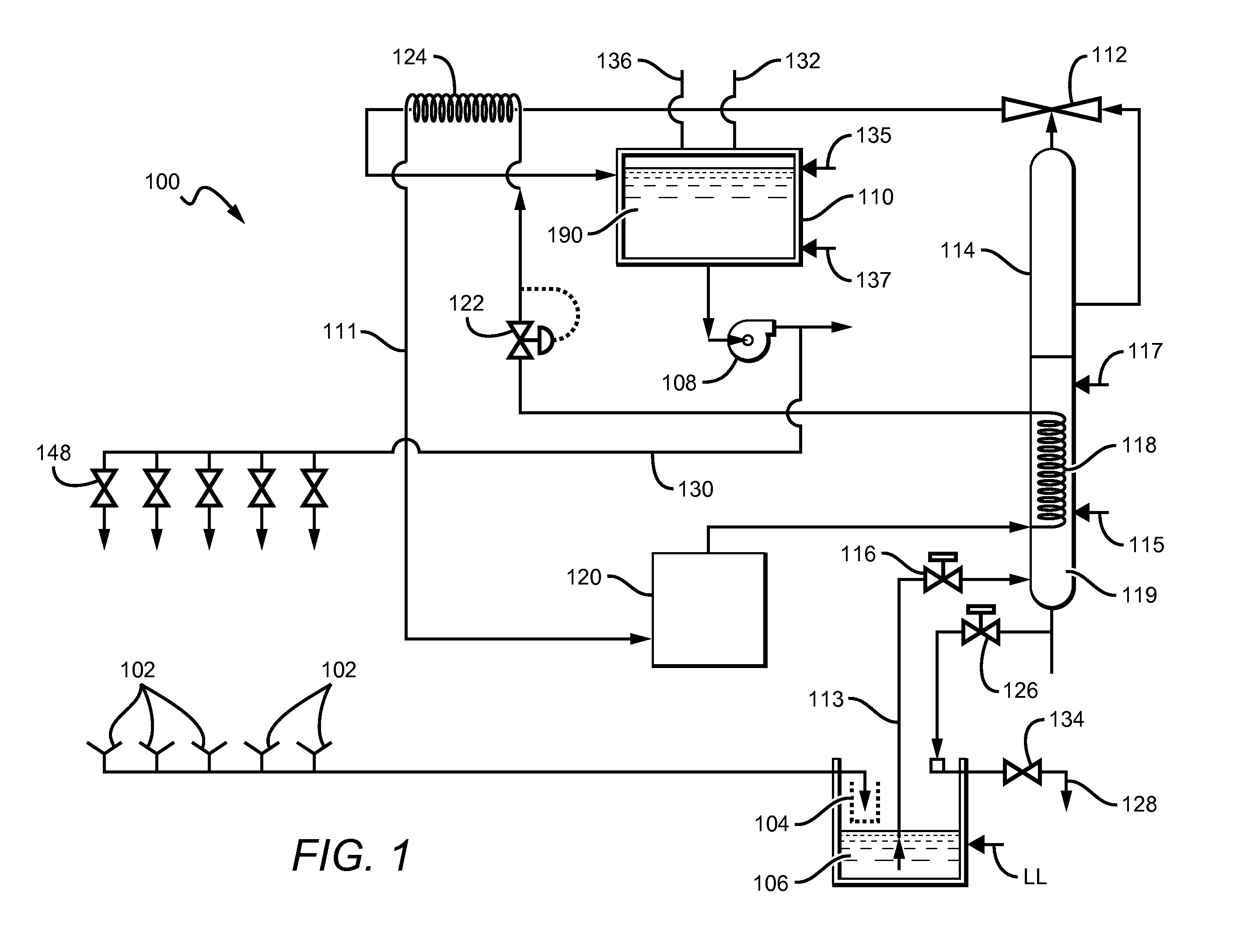Distillation Urine Recycling Systems and Methods
a technology of urine recycling and distillation, applied in vacuum distillation separation, separation processes, filtration treatment, etc., can solve the problems of high cost of waterless urinals, low-density sealants, and constant need for potable water,
- Summary
- Abstract
- Description
- Claims
- Application Information
AI Technical Summary
Benefits of technology
Problems solved by technology
Method used
Image
Examples
Embodiment Construction
[0021]In an exemplary embodiment of a water recovery system 100 for processing wastewater into a flushing fluid shown in FIG. 1, wastewater can be piped from five urinals 102 through an optional filter 104 and into a holding tank 106. Filter 104 can be a strainer basket, a nano-electronic filter or other commercially suitable filter that advantageously removes debris and other solid contaminants from the wastewater. The wastewater can remain in the holding tank 106 until it is needed for processing. If the wastewater level in the holding tank 106 reaches a predetermined maximum level, the excess wastewater can flow from the holding tank 106 to a drain pipe 128. This can occur passively, similar to overflow holes found in sinks, or could occur actively, such as by the use of a level switch that signals a valve actuator to open a valve and allow the excess wastewater to flow to the drain pipe 128. Preferably, the drain pipe 128 includes a check-valve 134 or other one-way valve, such t...
PUM
| Property | Measurement | Unit |
|---|---|---|
| temperature | aaaaa | aaaaa |
| pressures | aaaaa | aaaaa |
| temperature | aaaaa | aaaaa |
Abstract
Description
Claims
Application Information
 Login to View More
Login to View More - R&D
- Intellectual Property
- Life Sciences
- Materials
- Tech Scout
- Unparalleled Data Quality
- Higher Quality Content
- 60% Fewer Hallucinations
Browse by: Latest US Patents, China's latest patents, Technical Efficacy Thesaurus, Application Domain, Technology Topic, Popular Technical Reports.
© 2025 PatSnap. All rights reserved.Legal|Privacy policy|Modern Slavery Act Transparency Statement|Sitemap|About US| Contact US: help@patsnap.com



